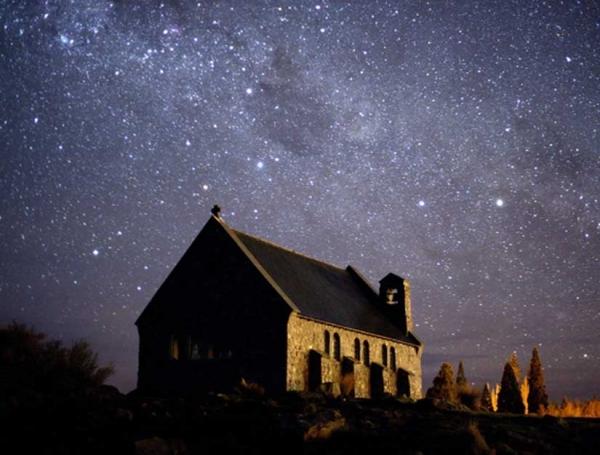Picked another area that will serve as a "safety Dark-Sky"
 Bashny.Net
Bashny.Net

"New stock corresponds to the status of 'gold-level' 'said the head of the International Dark Sky Association Bob Parks in a statement. "This means that the skies in this area is almost completely devoid of light pollution. To make it easier to describe it, we can say that - it's one of the best places on earth to study the stars and planets in the galaxy ».
To achieve the status of Dark Sky Reserve, the territory should be provided with a very dark skies and the virtual absence of light pollution.
New stock includes Aoraki / Mt. Cook National Park and the Mackenzie Basin, and was unofficially named «Aoraki Mackenzie International Dark Sky Reserve». This area is the fourth such dark sky reserve in the world and covers more than 1,600 square miles (4,144 square kilometers).
The announcement of the creation of a new stock, made this week, coincides with the Conference on Starlight Third International (Third International Starlight Conference). This - with the United Nations Assembly, which emphasizes that the night sky filled with stars - part of the common heritage of mankind and requires certain safeguards to ensure that present and future generations will be able to freely watch the stars.
Last month, members of IDSA announced the creation of the first such reserve in Africa, on the territory of the reserve NamibRand, a private nature reserve in southern Namibia.
The organizers of the new stock in New Zealand recognize that the night sky, plays an important role in the history of the area, as well as in the history of its indigenous people - Maori. It was used not only to carry out to the island of sailors, but also it has made astronomy and "star knowledge" part of the local culture and everyday life. Mackenzie Basin over the clearest, darkest and most spectacular night sky in New Zealand - according to a statement from analysts IDSA.
Outdoor lighting controls were first placed in a specific location in the center of the field during the early 1980s. They helped not only to minimize light pollution to neighboring Observatory Mt. John Observatory, but also save precious energy for these places, protecting wildlife and making the area popular for astronomers.
Tags
See also
How to build a plant for biogas production: the bioreactor are doing with their hands
Ceiling panel cooling
Choose a beautiful and practical design of the fence for a private home
The key to success: the Quality of your life is determined by the quality of questions you ask yourself
NASA provided the Valkyrie - a humanoid robot that will participate in the final competition DARPA
10 extraordinary things
Production of solar panels

















